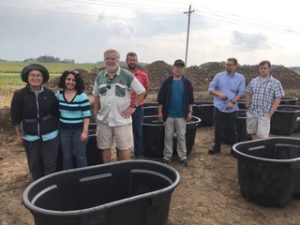Through a Public Notice released on Feb. 23, the U.S. Army Corps of Engineers (USACE) have detailed a new approach for the functional assessment of streams. USACE has developed its Stream and Wetland Valuation Metric (SWVM) for the state of Ohio to provide a method for determining the level of functions and values provided by aquatic resources in Ohio. This release is for the stream portion of the SWVM tool to be used in Ohio. USACE is still developing the wetland SWVM tool for Ohio. The SWVM tool will be used by permit applicants to evaluate the amount of function and value lost when aquatic resources are impacted. It will also be utilized as the basis for evaluating the magnitude of improvements associated with compensatory mitigation projects. Previously, impacts to streams and stream mitigation projects were evaluated based on linear feet and credit ratios.
For more information on SWVM, contact Vince Messerly at vmesserly@streamandwetlands.org.

